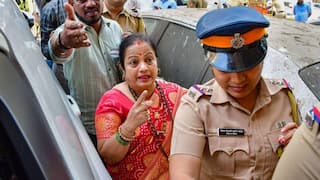On This Day: Remembering Santhal Rebellion That Sowed The Seeds Of 1857 Revolt Against The British
The Santhals, who were deprived of their lands, waged guerrilla warfare and took the uprising in 1855–1856. This revolution was called Hul, and started on June 30, 1855.

This Day, That Year: Numerous movements occurred during the 19th century, but the Santhal revolt played a significant part in India's struggle for independence. Two years prior to the Great Revolt of 1857, on June 30, 1855, two Santhal brothers named Sidhu and Kanhu Murmu organised 10,000 Santhals and declared an uprising against the British.
Who Are Santhals
The Santhals are the largest tribal group in India today, as per the population figures, and are native to the Indian states of Jharkhand, West Bengal and Odisha.
Residing in the Rajmahal Hills of Bihar, the Santhals were farmers. British looked to them to boost their income from agriculture. Santhals agreed to clear forests to practice settled agriculture. In 1832, many areas were given the names Damin-i-Koh or Santal Pargana. But as British exploitation grew over time, the Santhal Rebellion eventually sparked.
What Led To Santhal Rebellion
The introduction of the Permanent Land Settlement in 1793 is responsible for the uprising. The Santhals had been farming these lands for centuries, but the British settlement pattern snatched them away. The peasants were given land by the zamindars, who purchased it at auction from the British government. Farmers were taken advantage of by zamindars, lenders, Europeans, and British government officials who also increased the land tax.
To support themselves, they turned to money lenders, who provided loans at exorbitant rates. To satisfy the demands of the oppressors, they were made to work for years cultivating the land. Many were required to work on the indigo plantations or railway projects the British started.
Due to this, they decided to revolt against the government and landlords. Zamindars, police, revenue, and courts all participated in a system of petty tyranny that included extortion, oppressive exactions, forcible property confiscation, abuse, and personal violence.
The Santhal Rebellion
The Santhals, who were depressed, waged guerrilla warfare and took the uprising in 1855–1856. This revolution was called Hul, and started on June 30, 1855. Farmers joined the Santhals' own troops as they marched against their oppressors.
The rebellion was headed by the two brothers- Sidhu and Kanhu Murmu, as well as their sisters Phulo and Jhano Murmu. Over 10,000 people were militarised. Additionally, storehouses and warehouses were broken into and burned down.
Numerous non-tribal and underprivileged contributed to the insurrection. Milkmen and others provided supplies and services to the rebels, and blacksmiths known as Lohars travelled with the rebel bands to maintain the weapons' quality.
However, as soon as the government learned of their uprising, they dispatched the military to massacre the Santhals. Bows and arrows were targeted by loaded heavy weapons and their homes were destroyed using elephants.
Sidhu and Kanhu, two brothers, were apprehended and killed. Phulo and Jhano Murmu also killed 21 soldiers before they perished when they sneaked into the enemy camp. Unfortunately, the uprising ended violently. To put an end to the Santhals' resistance, the British army burned down villages, killed, and even raped over 15,000 of them.
Santhal Rebellion Significance
The Santhal Rebellion was a class and caste conflict that served as a catalyst for people to rise up and fight for their liberties. The Naxalite movement in Bengal was seen as having its roots in the revolt. One of the most extraordinary events in the pre-independence history of the Indian Subcontinent is thought to have been the Santhal Rebellion.
Sadly, issues still persist even after India gained its independence. The Santhals' frustrations with the government go deep, and they still fight back against them. The Santhals, just like in 1855, are upset about losing power and ownership rights over the land they believe to be a part of them. Jangal Santhal, a Santhal, was a member of the core group that launched the Naxalite movement (named after Naxalbari, a village in West Bengal), in 1967, along with Charu Majumdar and Kanu Sanyal.
Related Video
Breaking News: Maharashtra Politics Shifts: Congress Suspensions Boost BJP Ahead of Local Body Polls





































